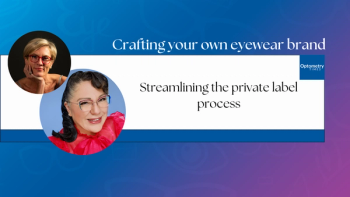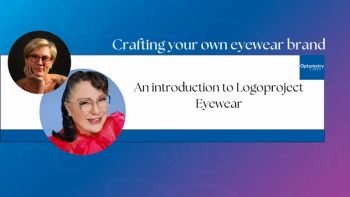
- Optometry Times September 2019
- Volume 11
- Issue 9
Modernize contact lens wear in 2019
While lecturing at SeaVision earlier this year, I found myself sitting in a dining room enjoying the view of the Mediterranean. It was right about then that my colleague reached into each eye to extract a
The irony is that I had done the same thing the night before. We sat and marveled at why there are not better lens options for post-LASIK corneas. This evolved into a discussion as to why there are not more toric multifocals, colored torics, or high-oxygen daily disposables in toric or multifocal powers.
The wish list can grow quickly, but let us take a minute to acknowledge and appreciate the latest entries into the
Related: Scleral contact lenses help manage ocular surface disease
Acuvue Oasys with Transitions Light Intelligent Technology
It is not often that a
Most patients experience strain and discomfort in bright light, but few complain. This is likely because it is expected. One of the conversations in which I come across most emphatically is when I am speaking to patients about prescription sunglasses. I am swinging my hands about explaining that until a patient has experienced being able to see clearly outside without squinting, she just does not know what she is missing. Perhaps the same is true here.
However, because outdoor light sensitivity is expected, there are likely more ocular surface disease (OSD) patients complaining about the lights inside big box stores than the sunlight.
Fortunately,
Inside Acuvue Oasys with Transitions,1 photochromic molecules are bonded to the lens matrix. The light exposure causes a chemical reaction that changes the physical structure of the molecules, allowing them to absorb visible light.
Related:
Because this lens is not a coating, its effects should endure the two-week wearing period- provided it is stored away from light. The lens blocks up to 15 percent of light in normal indoor conditions and up to 70 percent in outdoor conditions.
While the lens protects the eye by blocking ultraviolet (UV) light, it also has blue light-blocking capabilities and claims to reduce halos and starbursts at night.
Lens darkening begins immediately when exposed to light. The fade to clear occurs within 90 seconds of reducing the stimulus. Photochromic spectacle lenses tend to be influenced by temperature, getting darker when it is cold outside. However, a
As for the aesthetics of the lens when activated, it is noticeable that the tinted lens overlaps the limbus. Also with light-colored eyes, there is a noticaable but not always dramatic change in the perceived color of the iris.
Acuvue Oasys with Transitions is made of senofilcon A, which has a Dk/t of 147 and water content of 38 percent. The lens is available in an 8.4 mm base curve, 14.0 mm diameter, and powers ranging from -12.00 D to +8.00 D in 0.25 D steps.
Related:
Finally, a standard issue multifocal toric contact lens. This lens uses Bausch + Lomb’s 3-Zone Progressive Design to provide presbyopic correction and the company’s OpticAlign design for toric stabilization. These are the same design elements already familiar in Bausch + Lomb Ultra for Presbyopia and Bausch + Lomb Ultra for Astigmatism.2
The lens is made of samfilcon A with MoistureSeal technology, and it has a Dk/t of 163 and water content of 46 percent. Although it is a monthly disposable, it is not yet approved for seven-day extended wear as other Ultra family lenses.
Related:
Cylinder choices include -0.75 D, -1.25 D, and -1.75 D and axes 10 degrees to 180 degrees in 10-degree steps. The low add covers spectacle add powers +0.75 D to +1.50 D, and the high add is prescribed for spectacle adds of +1.75 D to +2.50 D.2
It’s easy to say “Wow, we need this in a daily disposable.” But it is impressive to see the lens debuted with such expansive parameters and, as always, ODs must embrace the technology present before a company takes the next step toward further specializing a lens. In addition, keeping it as a monthly modality helps control the cost for the patient.
CooperVision’s myopia control soft lens is not yet available in the U.S., but it is already on the shelves in Canada and the UK and multiple countries in Asia and Europe.3 ODs know of the need for retarding myopic progression in youth. Aside from self-image concerns and inconvenience of a large myopic refraction, myopia presents serious pathological consequences such as retinal detachment and glaucoma.4
It is encouraging to see this
Historical treatments have included atropine, orthokeratology (ortho-K), progressive addition lenses (PALs), or bifocal spectacles. Over the past decade, ODs have also learned that time spent outdoors has an impact on the onset of myopa. Though there is not yet a consensus on the minimum amount of time needed, more time outside is better.4Related:
The lens is designed as a bull’s eye pattern with a distance center and 2.00 D of defocus in the peripheral treatment zone. Some wearers may experience shadowing during adaptation, but it often dissipates in approximately one week.
This reduces the influence of questionable hygiene habits and over wear. The parameters currently available in approved countries are -0.25 to -6.00 D in 0.25 D steps with an 8.7 mm base curve, 14.2 mm diameter, and 28 Dk/t, and it is sold in a 30-pack.
Conclusion
Each of these
But they are also
Read more contact lenses and lens care content
References:
1. Johnson and Johnson Vision. Acuvue Oasys with Transitions Light Intelligent Technology.
Available at: https://www.jnjvisionpro.com/how-transitions-contact-lenses-enhance-visual-comfort?utm_source=acuvue&utm_medium=referral&utm_content=AOWTLP. Accessed 7/24/19.
2. Bausch + Lomb. Contact lens parameters: Prescribe the Bausch + Lomb Ultra family of contact lenses. Available at: https://www.expectultracomfort.com/ecp/lens-parameters. Accessed 7/24/19.
3. CooperVision. MiSight 1 day. Available at: https://coopervision.ca/practitioner/our-products/misight-1-day/misight-1-day. Accessed 7/24/19.
4. Pucker AD. How to build a myopia control practice. Optometry Times. Available at: https://www.optometrytimes.com/practice-management/how-build-myopia-control-practice/. Accessed 8/12/19.
Articles in this issue
about 6 years ago
How to incorporate nutrition into dry eye practiceabout 6 years ago
As seen on TV: Doing harm, not help, to the ocular surfaceabout 6 years ago
Overlooked causes of dry eyeabout 6 years ago
Use aesthetics to treat lid and periorbital conditionsabout 6 years ago
How pain gates affect dry eye and chronic painabout 6 years ago
How inflammation may play a role in retinal diseaseover 6 years ago
How implementing a hiring process netted a great staffover 6 years ago
Follow new norm of identifying and treating patient pitfallsover 6 years ago
Ensure patients know follow-up visits may be coveredNewsletter
Want more insights like this? Subscribe to Optometry Times and get clinical pearls and practice tips delivered straight to your inbox.















































.png)


